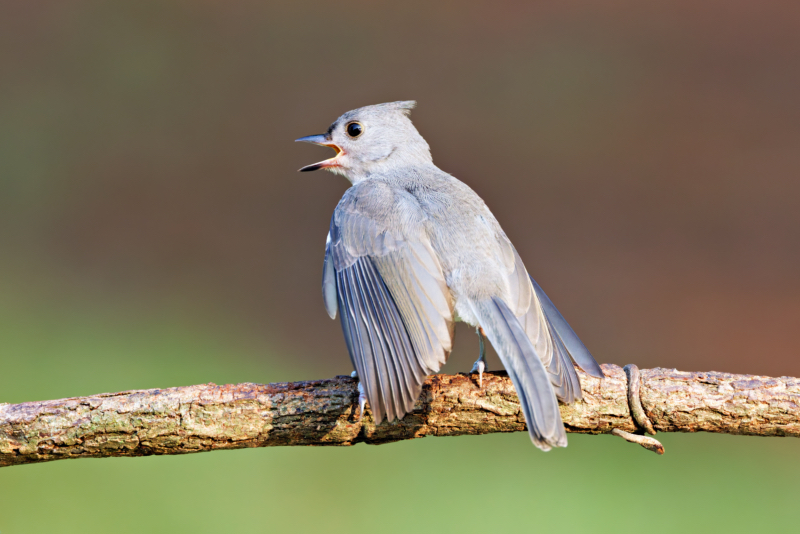Today’s blog post features some adorable photos of a Tufted Titmouse fledgling that I photographed near my bird feeder. This little ball of fluff was putting on quite a show, begging for a bite from its parent who was busy gathering suet nearby.

Tufted Titmice are frequent visitors to my feeders, and I was particularly delighted to see them bring a fledgling along this time. Last year, a pair even graced me with a nesting right in one of my birdhouses! You can see a glimpse into their family life in a previous blog post [Nesting Tufted Titmouse Update: Baby Birds].
This encounter sparked my curiosity about these fascinating fledglings, so I’ve compiled some interesting facts to share:
Fascinating Facts About Tufted Titmouse Fledglings
- Early Days: Tufted Titmice typically breed in early spring. The female lays a clutch of 5-7 eggs, which hatch after about two weeks of incubation.
- Cozy Nest Life: These birds favor cavities in trees or old woodpecker holes for their nests. They line them with soft materials like moss, fur, and even snake skin for warmth and security.
- Fast and Feathery: Once hatched, fledglings grow remarkably fast. They start out mostly fluff, but quickly develop recognizable feathers.
- Parental Care: For the first two weeks after hatching, these little ones rely entirely on mom and dad for food and protection. Both parents work tirelessly to bring insects and caterpillars to fuel their fast growth.
- Fledging Time: After about 16-18 days, it’s time to leave the nest! Fledglings venture out into the world, but stay close to their parents as they continue to rely on them for food and survival lessons.
Learning the Ropes
- Exploring: Once outside the nest, fledglings become little balls of curiosity, venturing around their familiar territory. This inquisitive nature makes them a photographer’s dream!
- Flight School: While their first attempts might be wobbly, fledglings gain confidence and skill in flight very quickly.
- Learning by Example: These youngsters are like little sponges, mimicking their parents’ foraging techniques, predator avoidance strategies, and social behaviors – all essential for survival.
Feeder Fun
- Following the Leader: If you see adult Tufted Titmice at your feeders, there’s a good chance their fledglings might join the feast! This is a fantastic opportunity to observe these young birds up close.
- Curious Creatures: Fledglings tend to be less wary of humans than adults, allowing for closer encounters and stunning photo moments.
Distinctive Features
- Crested Charmers: Even as fledglings, Tufted Titmice are recognizable by their trademark crests and large, black eyes. Their plumage also starts to show the signature grey and white colors of the species.
- Vocally Developing: Fledglings begin practicing their calls early on. Though softer and less refined than adults, they’ll soon be mastering the classic “peter-peter-peter” song of the Tufted Titmouse.

Witnessing Tufted Titmouse fledglings is a truly rewarding experience. It offers a glimpse into the remarkable early life stages of these captivating little birds. Whether you’re a seasoned wildlife photographer or simply a backyard bird enthusiast, there’s always something new to discover and appreciate about these energetic youngsters. So next time you’re outdoors, keep an eye out for these delightful feathered friends!
